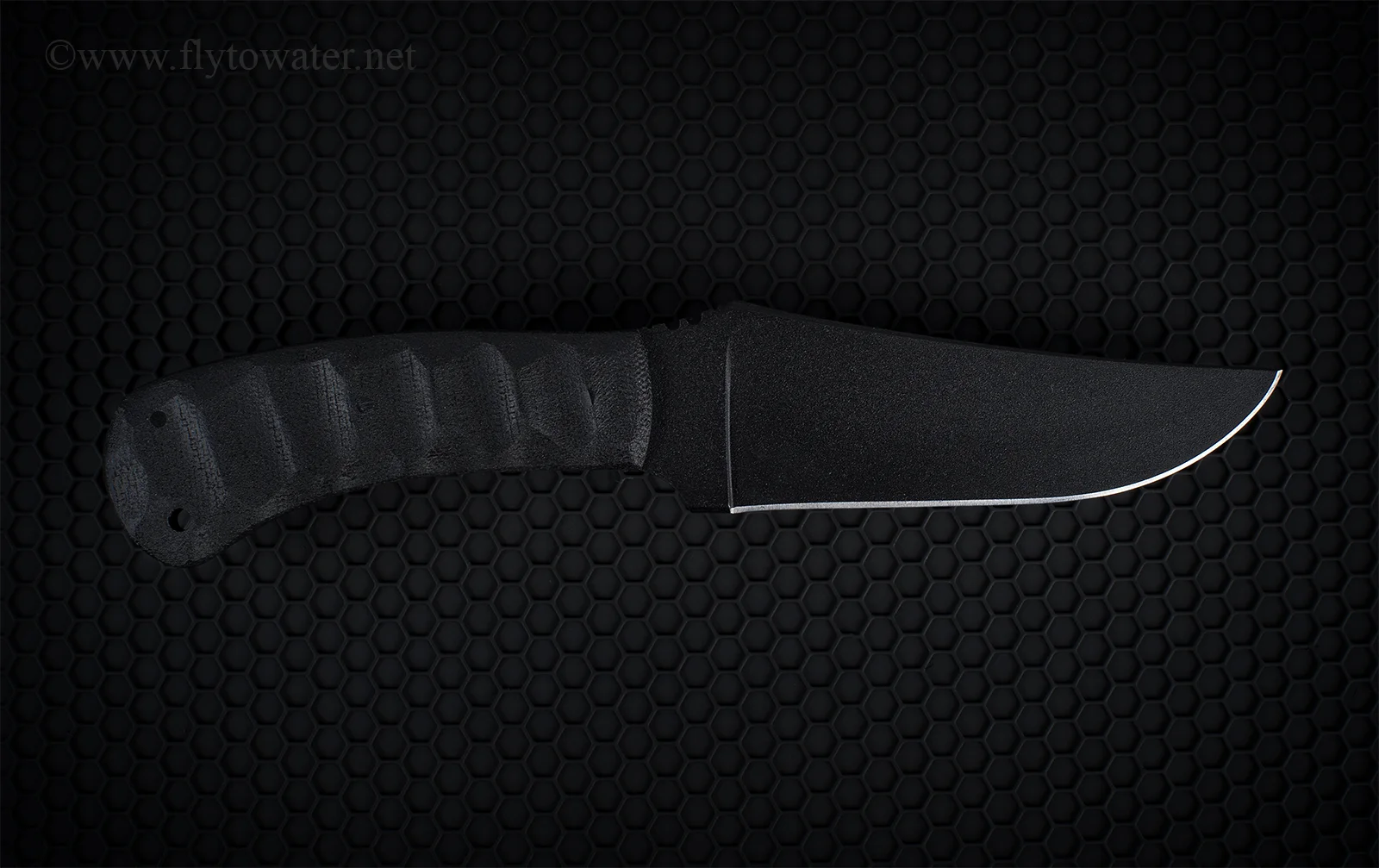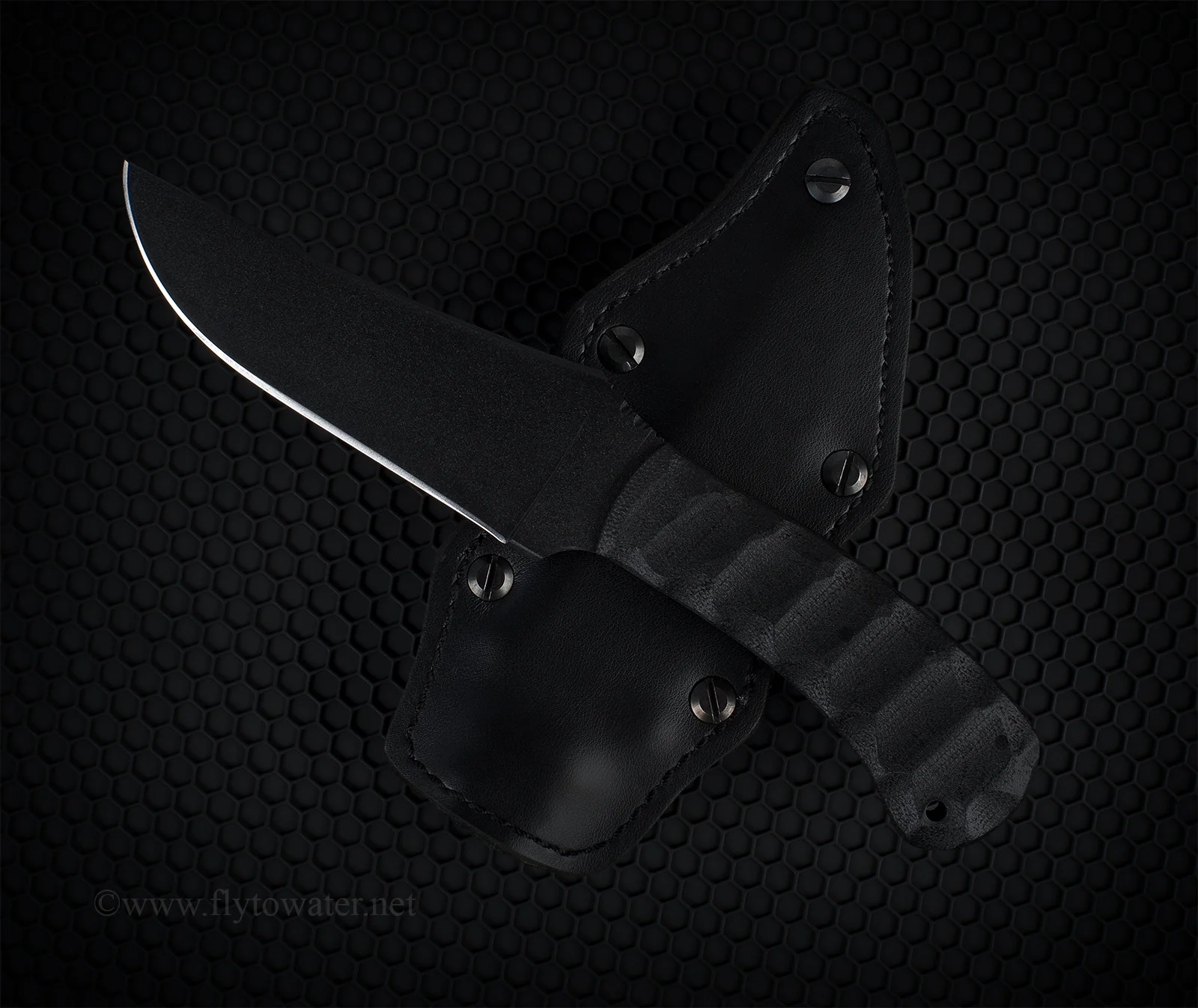It's time now for the much anticipated third installment of Edges, a series which seems to be escalating and becoming progressively more serious as the Roman numeral numbering scheme approaches the point where a "V" is thrown confusingly into the fray.
Ever since I was a kid and primarily concerned with using knives to whittle pointed sticks, I've appreciated how different blade designs influence performance. Tradeoffs are always present as properties such as alloy, shape, grind, and thickness are altered.
The Winkler Knives II Belt Knife is proportionally similar to the Nimravus in the previous post with a 4.75-inch blade, overall length of 9 inches and 6.7-ounce weight, yet it behaves quite differently. Where the Benchmade's thin edge and long taper make for a very good slicer, the Winkler leans more into utility knife territory. The blade is thick and wedge-like, creating strength for chopping, prying, batoning, and penetrating heavy materials. Meanwhile the belly is curved, allowing for a longer cutting surface which is a trait common to skinning knives - this makes it perfect for hard, slashing strokes such as cutting a drift boat anchor rope in an emergency.
What results is a compact, versatile tool that stands up to heavy use. The Belt Knife is durable and the blade carries thickness all the way to the tip where many are fragile. If you were cutting vegetables, a Nimravus would slice more effortlessly but the Winkler gets the job done while being capable of the serious prying/chopping that causes thin designs to fail.
A flat grind is used providing ease of sharpening and the 80CRV2 carbon steel takes and retains a nice edge. The Belt Knife is easy to use and easy to maintain. Winkler offers a number of different handle options for this product including wood, rubber, micarta, and sculpted micarta (shown here). Personally I love sculpted micarta handles; they are my favorite above all others not only due to the excellent grip they provide both wet and dry, but because they tend to be individually crafted and therefore unique.
This make/model gained a great deal of notoriety when it was revealed that Matt Bissonnette (a U.S. Navy S.E.A.L. operator assigned to Team Six) carried the Winkler Belt Knife as part of his combat load out, and had one with him on the Bin Laden raid.
Part of what makes this blade such a solid choice as a tactical or utility tool is the outstanding sheath. Winkler uses a leather/kydex sandwich to produce a simple and highly functional solution. The knife is held in place firmly without the need for a retention strap, making it immediately accessible. A lanyard can be used at the point, and the belt attachment is adjustable via spacers to get the perfect horizontal or vertical mount on any belt, strap, or MALICE clip.
This is one of my all-time favorite knives because it's an ideal size for easy carry, tremendously accessible owing to the brilliant sheath, and is such a solid blend of blade strength, cutting ability, and ease of sharpening. It's on the expensive side, but Winklers just plain last and work hard. It may have come across that I am partial to this sheath, and I will mention that many knives costing upwards of $250 either come with a cheap sheath or none at all. Quite a few consumers end up with an aftermarket or custom accessory, and here you get one that really stands apart in my opinion.
To wrap up, Winkler also offers some similar knives with slightly different blade designs that have many of the same properties. If you are intrigued by the Belt Knife, you may want to check out the Utility Knife, Spike, and Hunting Knife also.


